IN THE MARVELS GARDEN
A walk in the shadow
of the
"Goldberg Variations" of Johann Sebastian Bach
|
SYNOPSIS
|
The main aim of the authors of the book regarding the Goldberg Variations was to collocate this musical composition in a multidimensional perspective, establishing connections with other fields of human activity and thinking (science, architecture, literature and so on), trying to overcome the limits of a strict musicological analysis: this is in effect coherent with authors multidisciplinary interests and this approach, because of their different personal histories and experiences, is very stimulating for them.
The Goldberg Variations are in authors imagination a kind of wonderful "marvels garden" (this is the title of the book) where they like to walk, to discover what the fantasy suggests them and probably to discover actually themselves.
|
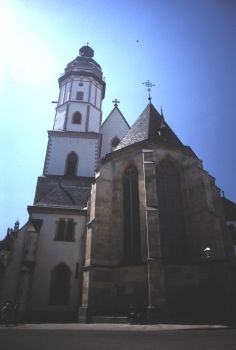
|
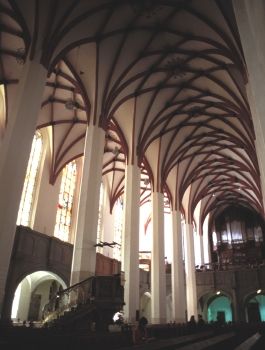
|
|
Thomaskirche (Lipsia).
The authors first idea was "the play",.... the "conscious play" of every scientist and artist. They think that wonderful works like the Goldberg Variations can be conceived and built only for aims which are self-contained, not depending on other external goals. They think that J.S.Bach was an extraordinary sounds-player: so in the first chapter they explain their theory of playing, as a common way of living of artists and scientists, considering also their work's communication aspects.
The second chapter is devoted to the most inner nature of the music, vibration tuned with Universe dynamical essence and at the same time vibration which is generated by the spark of energy contained in each person, manifestation of the rhythm of its breath. Whatever music has its own level of energy and the energy of J.S.Bach music is probably the highest we can imagine. It appears to us as a turbulent stream, a torrent which is changing in infinite ways, generating its own energy by itself.
The third chapter deals with the variation in music, considering both the aspects related to the musical speech itself and the "variations on a theme" like structured kind of musical composition. In this discussion the authors range over different cultures in the world and in the historical ages.
The fourth chapter is devoted to J.S.Bach's way of writing, first of all establishing an analogy between the structure of musical speech and the structure of clothes (warp, woof, and so on), then considering the fundamentals of its musical language, harmony, melody, rhythm and timbre.
|
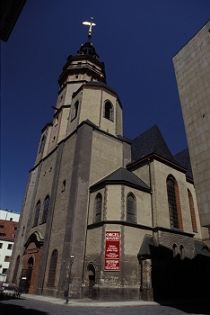
|
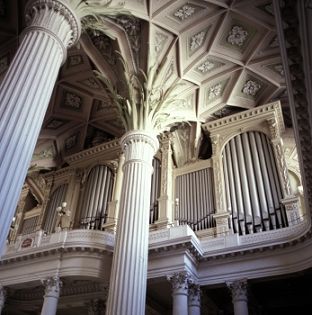
|
|
Nikolaikirche (Lipsia).
The fifth chapter holds more detailed treatments and discussions concerning J.S.Bach's music, considering particularly the use of scales and other basic structures of the musical speech, analysing what the authors call "the consonance field", a global chordal structure of variable length, and finally considering other larger musical structures, particularly geometric ones.
In the sixth chapter the authors explain their vision of Goldberg Variations: they see in this work a true breath of sounds, where different moments of expansion and contraction alternate each other, a kind of "yin-yang" of sounds. The sequence of variations winds increasing and exploiting its energy, diverging from the mould of a standard "Variations on a Theme" and flowing inevitably into the Parnassum of the final "Quodlibet".
The seventh chapter discusses problems related to the Goldberg Variations interpretation, considering different instruments and most relevant performances.
Finally, in the conclusions, the authors suggest a comparison between the Goldberg Variations and Polifilo Garden which is described in great detail in a book of fifth century, "The Hypnerotomachia". There are several affinities between music, architecture and gardens. The Polifilo garden is particularly interesting not only for geometrical complexity based on selected numbers which have the same importance also in music and in the Goldberg Variations too. but it is a symbol of a travel towards its own interiority, its own soul recognition; it is an allegory like most of relevant works in arts, music and literature history.
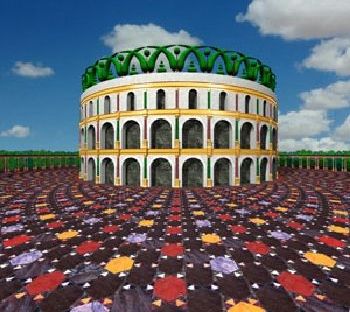 Polifilo garden ('Hipnerotomachia', XV sec.) Polifilo garden ('Hipnerotomachia', XV sec.)
The above garden, never built, but well described in every detail (also from botanical science point of view) has been recently reconstructed by computer with powerful graphic capabilities by two architects in Turin, Silvia Fogliati and Davide Dutto, and it has been published in the book "Il giardino di Polifilo", FRM, Milan 2002.
|

|

